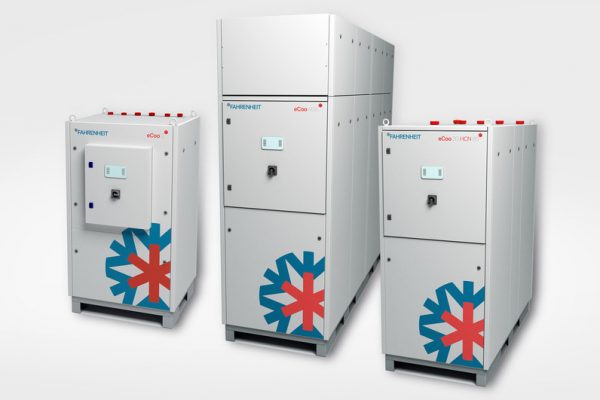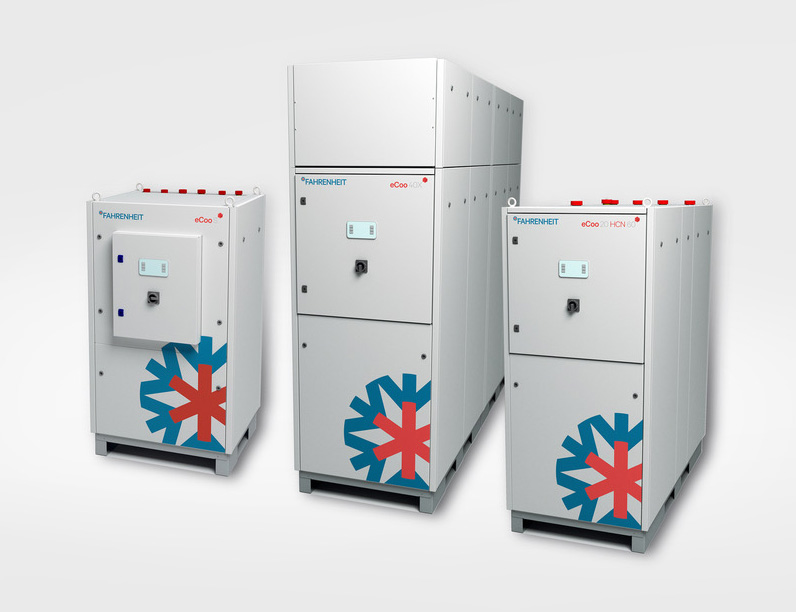7-Eleven Kuala Lumpur
This project was a conversion from HCFC-22. It involved a Topaire air-cooled split unit. Energy savings are reportedly 24% over the conventional, synthetic-based system.

This project was a conversion from HCFC-22. It involved a Topaire air-cooled split unit. Energy savings are reportedly 24% over the conventional, synthetic-based system.
The Dutch bank ABN Amro, uses a CO2 system to cool 15 high-performance servers at the data centre of its London branch. To provide a controlled climate for this hardware, the manufacturer, Star Refrigeration, designed and built a low-energy-consumption CO2 refrigeration system in 2006 to generate a total output of 300 kW. The carbon dioxide is recondensed with water at 6C via an indirect chilling cycle. The cooling is handled by ventilator units on the back of the server cabinets, where the carbon dioxide evaporates at 14C and absorbs the heat siphoned off by the fans. CO2 is reportedly well suited for IT climate control as it does not conduct electricity, helping to increase safety.


Cooling capacity (kW): Different cooling capacities available, e.g. 50kW
Countries using the technology: Main market is the DACH area, then all major countries of the EU, a few installations in Ukraine, Turkey, Egypt, Emirates, Burkina Faso, Canada, USA, Mexico, Panama, Colombia, Brazil, China, Korea, Taiwan, Australia, India, Thailand, Malaysia
Price range: Chillers start at slightly below 10K € for the smallest unit and prices increase with the capacities
Awards/merits: German data center award 2018, several German industry awards and certain efficiency awards
Training availability: Training for layout, installation and servicing
Heat transfer fluid: Glycol, water, pumped ammonia
Possible temperature range of chilled heat transfer fluid: -35°C – +12°C
Cooling capacity (kW): 1000, Comments Cooling capacity: Water +7°C/+12°C, screw compressor, environment air temperature 35°C, many other temperature ranges available
Type of chiller compressor: Screw
Heat transfer fluid: Glycol, water, pumped ammonia
Possible temperature range of chilled heat transfer fluid: -35°C – +12°C
Cooling capacity (kW): 640 for Water +7°C/+12°C and ambient air temperature 35°C
The AJ.Plus Co., Ltd manufactures film products in Thailand.
Alps Electric Nilai in Malaysia has recorded energy savings of 17% as a result of its conversion from HCFC-22 to a system with a Dunham-Bush water-cooled packaged unit.
Air conditioning, medium temperature (cooling) and low temperature (cooling) for capacities up to 3.650KW. Available with 1 to 4 open type screw compressors or 1 to 5 open type reciprocating compressors. Compact, easy to maintain design reduces space requirements & shortens assembly time on the construction site.
High-quality, optimally matched components for reliability & long service life.
GWP 0
In 2012, The Co-operative UK opened its headquarters in Manchester, UK, complete with the largest propane chiller to be installed in a commercial building in the country. The Angel Square complex features eight 650 kW water-cooled water chillers using R290, and achieved the highest possible ˜outstanding” accreditation under the BREEAM rating for sustainable building.
Ansell Co., Ltd. in Thailand is recording enery savings of 19.4% as a result of its conversion from an HCFC-22-based cooling system to 2 hydrocarbon split-systems. The system reportedly has a payback period of 12 months.